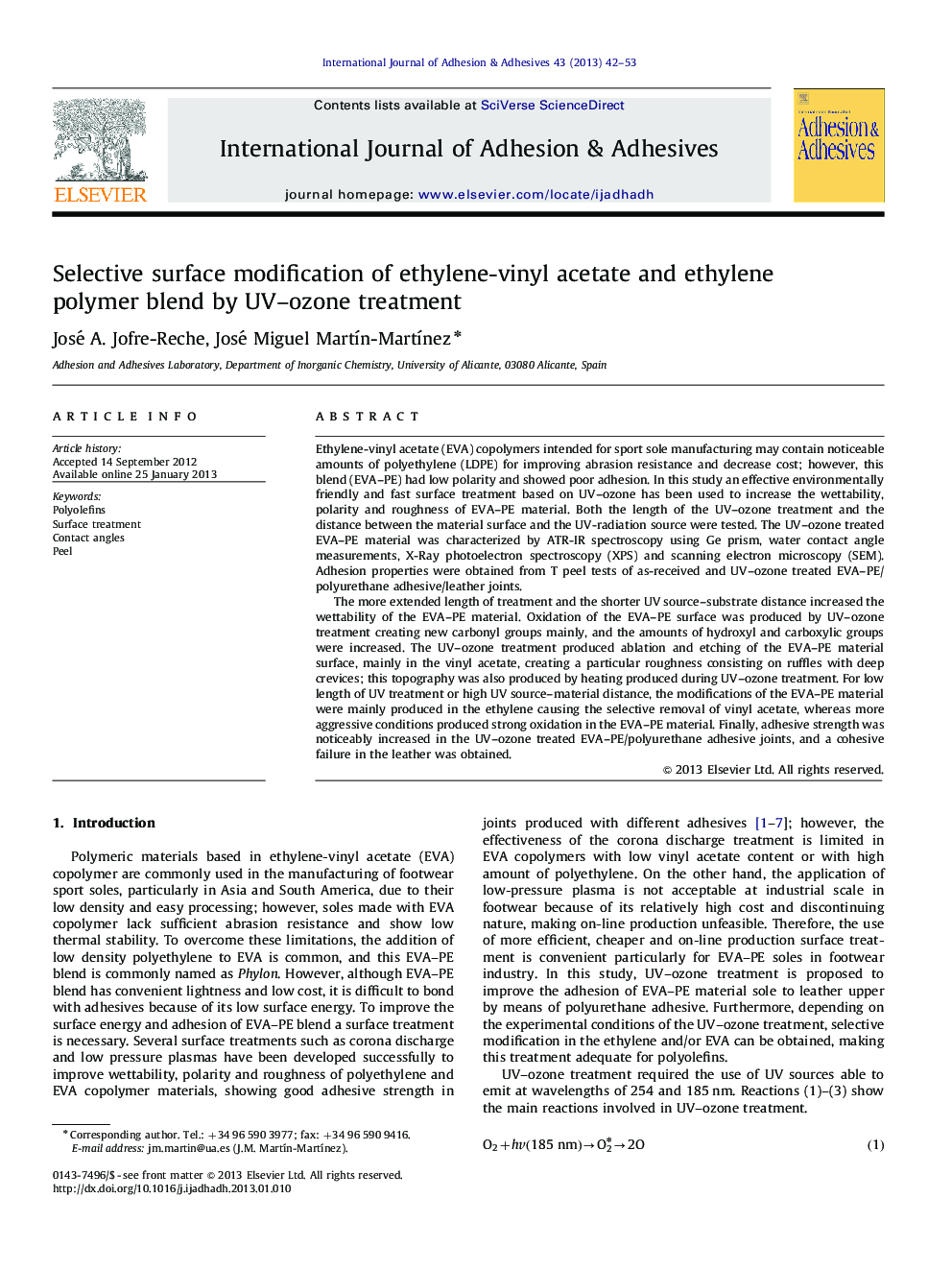| کد مقاله | کد نشریه | سال انتشار | مقاله انگلیسی | نسخه تمام متن |
|---|---|---|---|---|
| 776291 | 1463494 | 2013 | 12 صفحه PDF | دانلود رایگان |

Ethylene-vinyl acetate (EVA) copolymers intended for sport sole manufacturing may contain noticeable amounts of polyethylene (LDPE) for improving abrasion resistance and decrease cost; however, this blend (EVA–PE) had low polarity and showed poor adhesion. In this study an effective environmentally friendly and fast surface treatment based on UV–ozone has been used to increase the wettability, polarity and roughness of EVA–PE material. Both the length of the UV–ozone treatment and the distance between the material surface and the UV-radiation source were tested. The UV–ozone treated EVA–PE material was characterized by ATR-IR spectroscopy using Ge prism, water contact angle measurements, X-Ray photoelectron spectroscopy (XPS) and scanning electron microscopy (SEM). Adhesion properties were obtained from T peel tests of as-received and UV–ozone treated EVA–PE/polyurethane adhesive/leather joints.The more extended length of treatment and the shorter UV source–substrate distance increased the wettability of the EVA–PE material. Oxidation of the EVA–PE surface was produced by UV–ozone treatment creating new carbonyl groups mainly, and the amounts of hydroxyl and carboxylic groups were increased. The UV–ozone treatment produced ablation and etching of the EVA–PE material surface, mainly in the vinyl acetate, creating a particular roughness consisting on ruffles with deep crevices; this topography was also produced by heating produced during UV–ozone treatment. For low length of UV treatment or high UV source–material distance, the modifications of the EVA–PE material were mainly produced in the ethylene causing the selective removal of vinyl acetate, whereas more aggressive conditions produced strong oxidation in the EVA–PE material. Finally, adhesive strength was noticeably increased in the UV–ozone treated EVA–PE/polyurethane adhesive joints, and a cohesive failure in the leather was obtained.
Journal: International Journal of Adhesion and Adhesives - Volume 43, June 2013, Pages 42–53